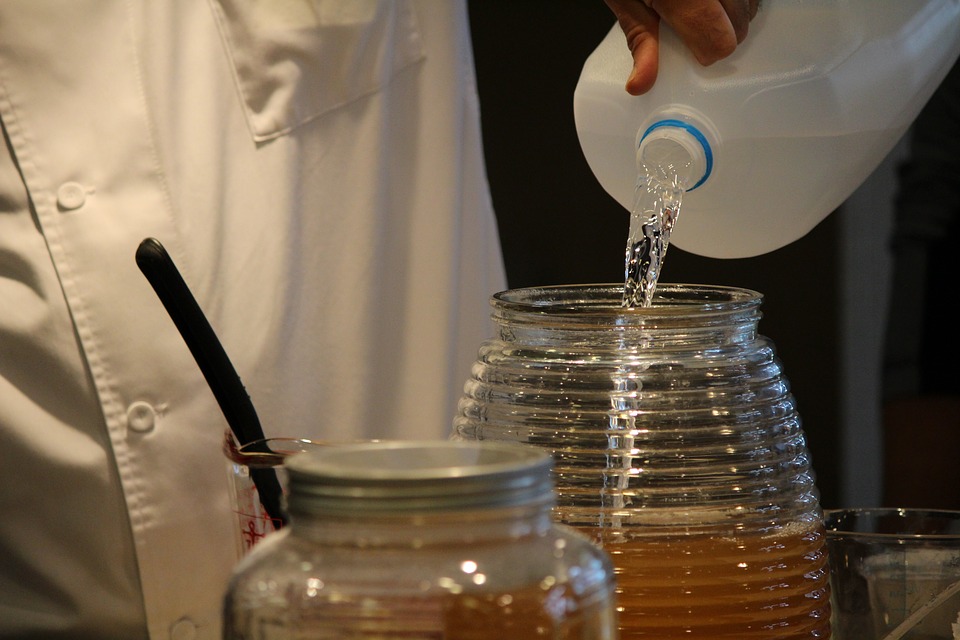What’s brown, cloudy and made with a large, dubious bacteria that floats at the top of a large batch? It’s kombucha, one of the fastest growing beverages in recent years. Kombucha is crisp, sour and carbonated. It’s actually delicious, but many folks still aren’t sure exactly what it is or how it’s made.
Kombucha is an ancient, fermented drink made from black tea, sugar and special bacteria. It is more than a tart, carbonated treat in a bottle – it’s a special drink that can keep the gut healthy, by adding more gut flora to the digestive system. Best of all, however, is that kombucha it can be made easily at home. So how do you make your own kombucha?
Let’s walk through this guide on making your own kombucha.
Step 1: Ingredients
Tea and Sugar
To make great kombucha, you need bulk, loose leaf tea. You can technically make the drink with any kind of tea, but you need caffeine to make a batch that won’t kill your bacteria. If you want to make a chamomile, herbal tisane or white tea kombucha, add a small amount of black or green tea to your tincture.
Pick the best tea you can. Look for organic, fair trade tea that has a rich, deep scent that hasn’t been sealed in bags. This will give you the best taste while controlling the amount you work with depending on how much you want.
Step 2: Make the Kombucha
Get about eight tablespoons, (the equivalent of eight tea bags), and put them into a glass or ceramic teapot so your mixture can steep. Add between ¼ to 1 cup sugar to your kombucha. This will convert to alcohol and acids, though there will be some left. Each finished kombucha batch has around 30 calories. White or raw sugar are both fine. Brown sugars can decrease the lifespan of your SCOBY and make your brew a bit yeasty. A good non-bleached/white sugar option are organic cane juice crystals (aka raw sugar).
Add hot water, stopping as you get to the one quarter mark and then halfway mark to stir or swish it around. The sugar needs to be fully incorporated and dissolved before the next phase. Keep adding water until the teapot is full and the tea is fully covered by water.

Then let the tea steep for four to five minutes. A longer amount of time will give your kombucha a bitter taste. Set a timer and be ready.
Strain and Wait
Pour the tea through a fine strain into a large, glass jar with space at the top. Then walk away and let the tea cool to room temperature before adding the Symbiotic Colony of Bacteria and Yeast, (SCOBY). The bacteria will convert your caffeine and sugar into different acids and could die off in a higher temperature. Give everything some space and wait until it’s ready.
Get to Know SCOBY
A SCOBY can be obtained any number of ways, but the best is to ask around for any extra that a friend may have lying around. As SCOBY replicates itself in each batch, anyone who works with it will inevitably have some to give away. If you know someone who makes kombucha at home, let them know you’re interested in trying a batch. You can buy it at some stores, but it may have yeast inhibitors or other added ingredients that you don’t want.
What you do want is a SCOBY that plays host to a whole colony of yeasts and bacteria. Lactobacillus is the main one, going straight to work once it enters the digestive system. Lactobacillus keeps your stomach settled and removes pathogens from your gut, all while giving the drink a smooth flavor.
One of the yeasts include probiotic yeast Saccharomyces Boulardii, which aids digestion and gives a note of light beer to your kombucha. Other yeasts that add to the flavor are brettanomyces and torulaspora, both of which balance the taste to something similar to a lambic or saison beer.
Step 3: Ferment your kombucha
Add your healthy SCOBY to your room temperature tea and cover it with a cheesecloth. Secure it with a rubber band and then put it in a quiet corner of your kitchen. Your kombucha will take a week to ten days to ferment fully. For less sugar, let it sit as long as possible.
You will know it’s ready when it has a some fizz and a vinegar smell. Pour yourself a small amount to check the taste. It should have a pleasant sourness without burning your throat.
Step 4: Drink your kombucha
Enjoy! Keep your SCOBY alive or dehydrate it to save it for your next batch. Or, make more kombucha. The fermented liquid works best when imbibed daily. Your stomach will be thrilled with it’s new, probiotic addition and you will feel great, too.
Other sources:
SCOBY & Kombucha starter kit from Missouri-based, independent company Zenobia’s Garden
A good sugar option from Kombucha Kamp
Kombucha starter kit (minus the sugar) from Cultures for Health
